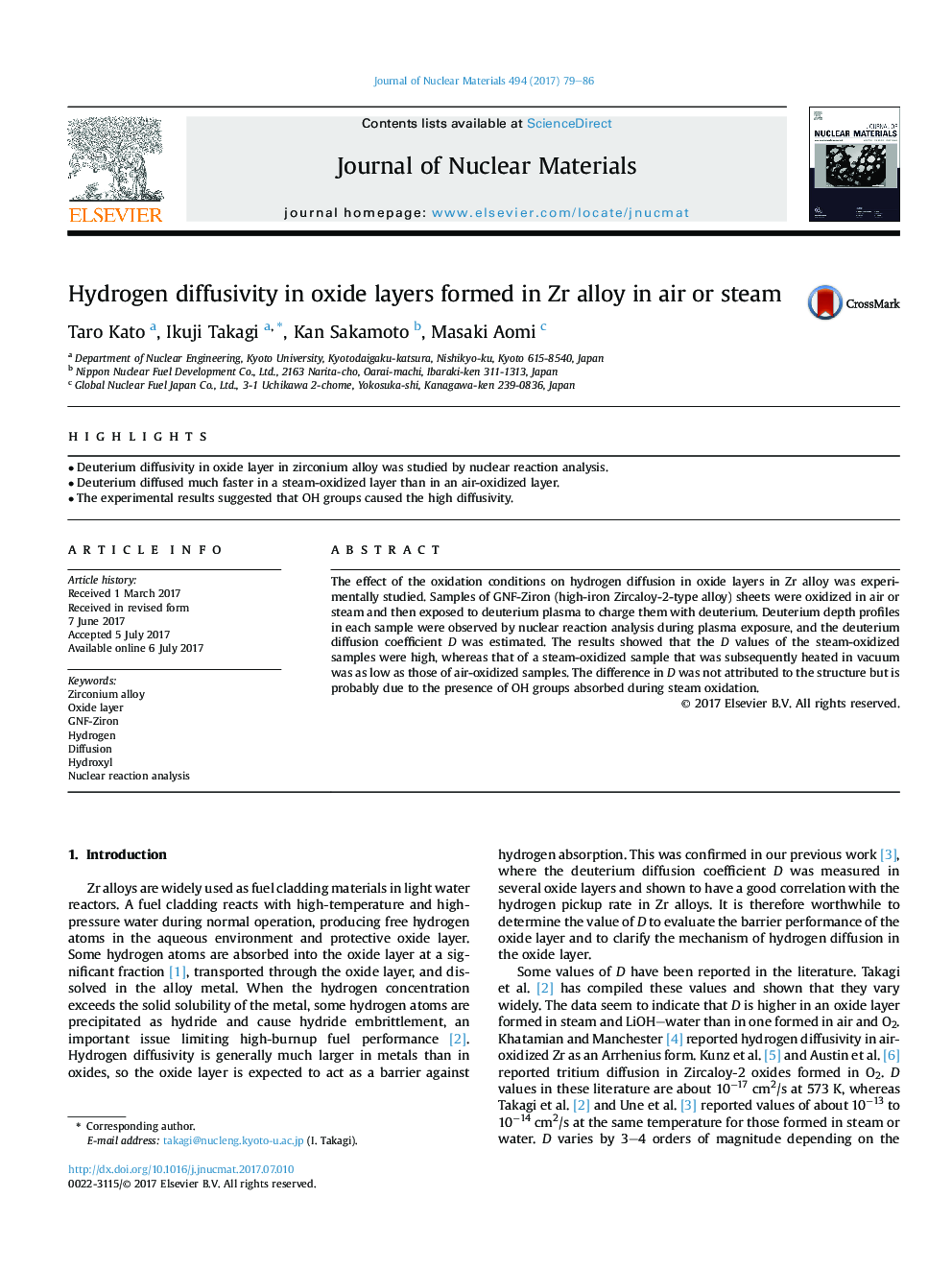| Article ID | Journal | Published Year | Pages | File Type |
|---|---|---|---|---|
| 5454078 | Journal of Nuclear Materials | 2017 | 8 Pages |
Abstract
The effect of the oxidation conditions on hydrogen diffusion in oxide layers in Zr alloy was experimentally studied. Samples of GNF-Ziron (high-iron Zircaloy-2-type alloy) sheets were oxidized in air or steam and then exposed to deuterium plasma to charge them with deuterium. Deuterium depth profiles in each sample were observed by nuclear reaction analysis during plasma exposure, and the deuterium diffusion coefficient D was estimated. The results showed that the D values of the steam-oxidized samples were high, whereas that of a steam-oxidized sample that was subsequently heated in vacuum was as low as those of air-oxidized samples. The difference in D was not attributed to the structure but is probably due to the presence of OH groups absorbed during steam oxidation.
Related Topics
Physical Sciences and Engineering
Energy
Nuclear Energy and Engineering
Authors
Taro Kato, Ikuji Takagi, Kan Sakamoto, Masaki Aomi,
